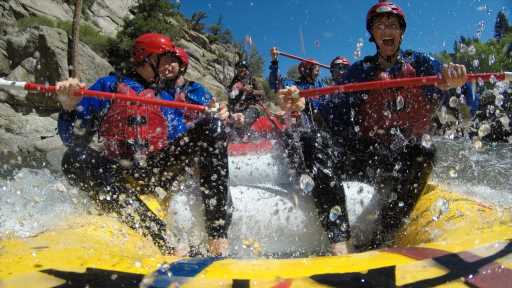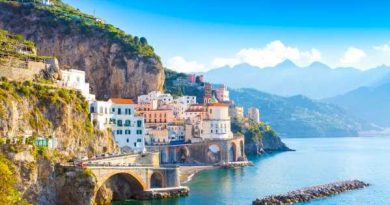Colorado’s 2022 rafting season looks promising after cool temperatures, late snow
Recent cool temperatures and significant precipitation in the high country that brought widespread rain and up to two feet of snow at some locations have boosted prospects for a good rafting season for much of the state.
Warm temperatures in April and early May produced significant early snowmelt — and caused Breckenridge ski area to close two weeks early — but cooler temperatures since then slowed the rate of runoff. As of Friday, the snowpack in the South Platte River drainage — which encompasses popular rafting destinations including the Cache La Poudre River, the Big Thompson River and Clear Creek — stands at 42% above normal for the date.
“It’s looking great,” said Kyle Johnson, co-owner of Rocky Mountain Adventures, which operates on the Poudre. “The snowpack is strong, and these spring weather patterns have been beneficial to us.”
The Arkansas River Basin, which is Colorado’s most popular rafting destination, stands at 2% above normal.
“We had a pretty average snowpack throughout the majority of the winter,” said Mike Kissack, owner of American Adventure Expeditions, which operates on the Arkansas from a base in Buena Vista. “We had a bit of a warm spell in April and early May, but we’ve been getting quite a bit of moisture throughout the month of May, which slowed the runoff and added to snowpack totals. We’re looking at a great season.”
Kissack expects peak flows on the Arkansas to come in the next week to 10 days, but it’s important to note that peak flows do not correspond to peak business for outfitters. Peak flows are for thrill seekers, but families prefer the moderate flows that follow. Peak rafting business comes with summer tourism.
“We typically see our high flows at the end of May and the first couple weeks in June,” Kissack said. “We are right around average flows for this time of year, which are really amazing medium water levels. It’s just at a perfect water level right now. It will go up and we will see a higher flow than this when it peaks, and that will be our most adventurous time. Then usually right around end of June, beginning of July is when we hit that medium flow that we plateau at and ride until the middle of August.”
On the Poudre, Johnson said there was an early semi-peak last month — due to the warm temperatures of early May — and he is predicting a “second peak” in the next seven to 10 days.
“April and May are crucial times for our river basins,” Johnson said. “We saw unseasonably warm temperatures in early May and that’s what created that early and first peak. With the cold front coming in, it added snow to the high stretches but also (slowed) the flow coming out of the mountains into the river. We saw freezing temperatures at night. We had a peak in early spring and we’re going to have a more seasonable peak here in June. We’re going to see sustained flows for a longer period of time.”
Outfitters in the southern part of the state aren’t as fortunate. The snowpack in the Upper Rio Grande basin and the southwest corner of the state — which includes the San Miguel, Dolores and Animas rivers — stands at 3-4% of normal. The Animas flows through Durango, which is highly dependent on summer tourism.
“When I talk to outfitters down there, they’re still planning on going through the end of August,” said Dave Costlow, executive director of the Colorado River Outfitters Association. “There will just be low water. The Animas is one that’s really helped by thunderstorms and mid-summer rains. Because of the way it drains, it doesn’t take much for one of those rains to really augment the river, so they’re going to count on some of that. It may be low water, but it will certainly be sufficient to maintain rafting operations.”
Subscribe to our weekly newsletter, The Adventurist, to get outdoors news sent straight to your inbox.
Source: Read Full Article



